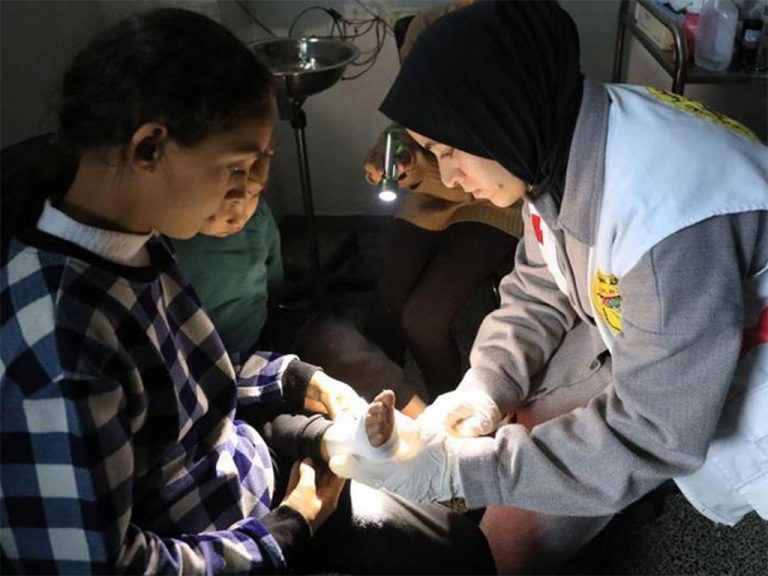The project’s goal is to satisfy the needs of the displaced people within the enclave, which are estimated to be nearly 85 percent of the population of the Strip, according to the UN website.
The imitative is deemed more than necessary given the cost in fatal victims of the conflict that broke out on October 7th, the overcrowding, Israel’s constant attacks and the imminent risk of an outbreak of transmissible diseases.
According to the WHO, since the beginning of the crisis, 179 thousand cases of acute respiratory infection, 136,400 cases if diarrhea among children younger than five years-old, 55,400 cases of mange and lice, and 4,600 cases of icterus have been reported.
The office for the Coordination of Humanitarian Affairs (OCHA) confirmed on Tuesday that the health authorities of the Strip managed to resume some hospital services in northern Gaza. According to the OCHA centers such as the Al-Ahli Arab hospital, the Patients Friends benefit hospital, the Al-Helou international hospital and other primary attention centers reestablished several of their services.
However, this took place in the midst of great risks surrounding the movement and the work of medical teams due to Israel’s ongoing bombardments of residential neighborhoods and in the proximity of health care facilities, the organization said.
UN agencies on the ground warned of over a million people seeking safety in the already overcrowded city of Rafah, with hundreds of thousands sleeping outside wearing inadequate clothing for the cold.
ef/llp/oda/ebr









